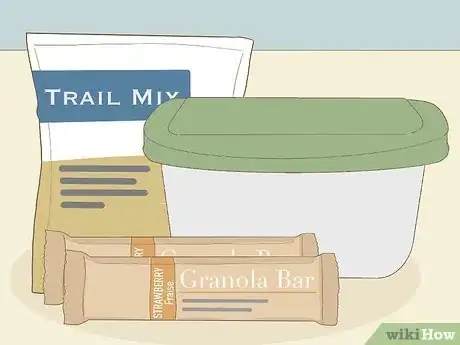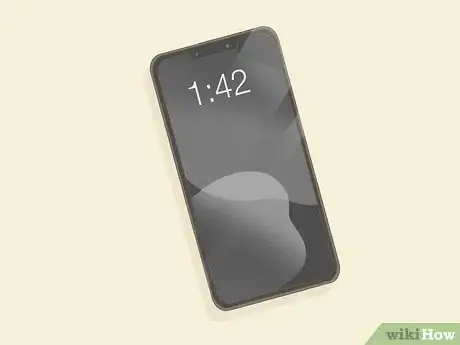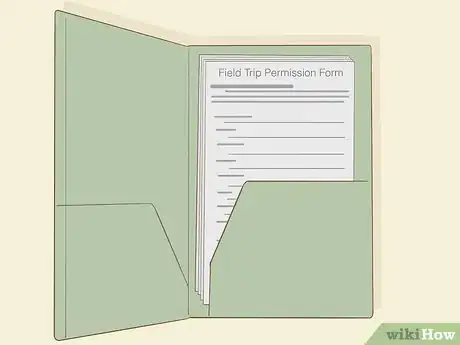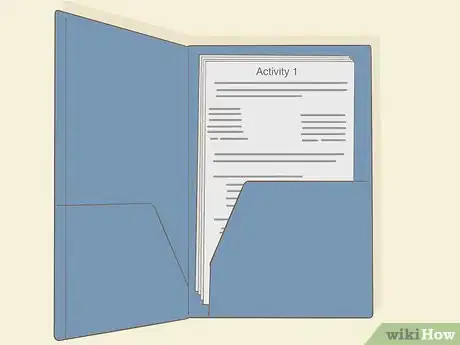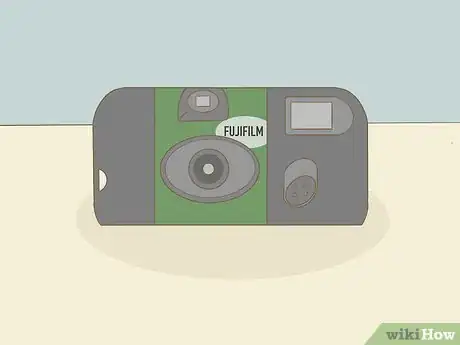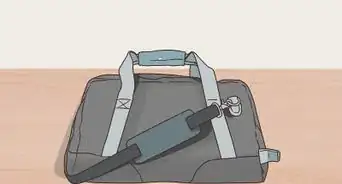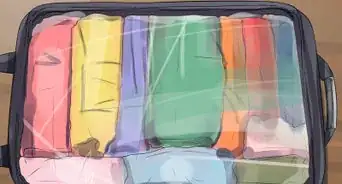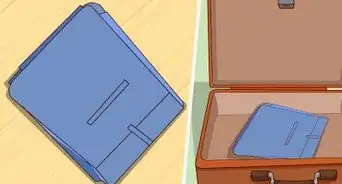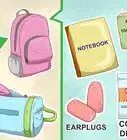This article was co-authored by wikiHow Staff. Our trained team of editors and researchers validate articles for accuracy and comprehensiveness. wikiHow's Content Management Team carefully monitors the work from our editorial staff to ensure that each article is backed by trusted research and meets our high quality standards.
wikiHow marks an article as reader-approved once it receives enough positive feedback. This article received 16 testimonials and 82% of readers who voted found it helpful, earning it our reader-approved status.
This article has been viewed 217,885 times.
Learn more...
Field trips are an exciting chance to learn outside of the classroom. They’re even more fun if you’re fully prepared for them. Fortunately, you can pack for a field trip to make sure you’re ready for any and everything that comes your way. As a student, choose a lightweight bag to pack the essential items that are required by your teacher, as well as any books and food you need to take with you. If you’re a chaperone or teacher, be sure to bring any assignments, supplies, or paperwork that you’ll need on the trip. If you have the space, add in a few personal items to make your trip even more enjoyable.
Steps
Bringing What You’ll Need as a Student
-
1Use a lightweight bag to pack your items. Your normal school backpack might be too big or unnecessary to carry the items you need to bring with you on a field trip. Choose a smaller bag that will fit all of your items but is lightweight and will take up less space. [1]
- Bring a messenger bag that you can sling over your shoulder for a less bulky option.
- Use a drawstring bag for a lightweight option that can hold your items
- Use a smaller bag for less items.
-
2Write your last name and phone number on your bag in case it gets lost. Smaller bags are easier to lose, especially in the hustle and bustle of a school field trip. Use a permanent marker to write your last name in big letters on the bag so you can easily identify it. Write your phone number beneath your name so it can be returned to you if it gets lost.[2]
Warning: Don’t write your first name on your bag so a stranger can’t pretend that they know who you are if they find it.
Advertisement -
3Ask your teacher or look over the checklist of items you need to bring. Make sure you have everything that you’ll need on the field trip by confirming what you need with your teacher. If there’s a checklist that your school or your teacher gave you, double-check it to make sure you’ve got everything you need.[3]
- Place any papers such as notes or your itinerary into a folder so it’s protected.
-
4Place any books, binders, or notebooks into the bag first. Heavier items such as schoolbooks and binders need to be stored in your bag first so they don’t squish any smaller and lighter items. Arrange the larger items so they’re flat against your bag and the spines and edges are poking you when you wear the bag.[4]
- Place the heavier books and binders in your bag first, then add lighter items like notebooks and folders on top of them.
-
5Put any pens or pencils into a container then into your bag. If you need to write or take notes while you’re on your field trip, place them into a pencil case or another container so they don’t get lost or broken. Put them in your bag on top of the heavier items so you can reach them if you need them.[5]
- Try to squeeze any highlighters, scissors, or sticky notes that you need into the case.
- You can find pencil cases at department stores and online.
-
6Pack your lunch into your bag on top of all of the other items. Place your lunch in your bag last so it won’t get crushed by the other items. Set it on top of everything else so you can easily reach it and it’s less likely to slide around and get squashed while you’re wearing your bag.
- Make sure you pack enough food for the trip.
- Add a few high-energy snacks like granola bars and trail mix in case you get hungry.
-
7Bring your cellphone if it’s allowed. If you’re able to bring your cellphone on your field trip, back it near the top of your bag or in an external pouch so you can easily access it. Use your phone to take pictures or contact your parents to pick you up after the field trip.[6]
- Add your teacher or chaperone’s phone number to your contacts so you can call them if you need them.
- You can also use your phone to call your friends or teacher if you get separated from the group.
- If you’re not allowed to bring a phone, don’t do it! You could get in trouble and field trips are supposed to be fun!
-
8Bring a book to read while you’re on the bus. The bus ride to your field trip could be really boring so bring a book that you enjoy to help pass the time. Choose a lightweight book that you can easily store in your bag without taking up too much room.
- You could also bring headphones and an mp3 player or listen to music on your phone, but that can drain your battery.[7]
- Make sure it’s okay for you to bring a book by asking your teacher first.
- Use the opportunity to study for your class or read up on the destination of your field trip.
Being Prepared as a Chaperone or Teacher
-
1Keep a first aid kit on the bus or vehicle so you can access it. Being away from school on a field trip also means you’re away from the school nurse and may be in a location away from quick medical treatment, so it’s important that you have a basic first aid kit handy. Store the kit somewhere on the bus or your vehicle where you can quickly access it such as under a seat or in the glove compartment.[8]
- You can find first aid kits at pharmacies, medical supply stores, and online.
- Build your own first aid kit that you can bring with you in case there’s an accident or injury on the field trip.
-
2Give the students name tags so you can identify them. Handing out nametags to the students on the field trip will help other teachers, chaperones, and the staff at the destination identify them. Before you arrive at the destination, hand out blank name tags and have the students write their names, or write their names for them and paste the name tag on their chest so they’re visible.[9]
- You may want to put your cellphone or the name of the school on the name tag as well in case one of the students wanders off.
-
3Place all of the signed waivers and permission slips in a folder. Keep any permission documents together in a folder so you can easily access and search through them if you need them. If you need to produce the documents or confirm that it was signed and completed, keeping them in 1 location will make it easier for you to locate them.
- Keep any allergy or medical information that may be needed in the folder as well.
-
4Fill a folder with any handouts or assignments for the students. If you plan to distribute informational handouts or written assignments for students to use on the field trip, keep them collected in one location so you can access them and keep them organized. Store them in a folder in your bag so you can distribute them on the field trip.
-
5Bring your cellphone and a charger. Keep your phone with you in case you need to contact a parent or another teacher or chaperone. You can also use your phone to take pictures while you’re on the trip. Bring a phone charger just in case you need to recharge your battery.[10]
- Make sure you have permission to take photos of the students or the destination before you take any.
- If your charger needs an outlet plug, be sure to bring one as well.
Tip: Save the contact information of all of the other teachers, bus drivers, chaperones, and anybody else you may need to contact in your cellphone before you go on the field trip.
-
6Pack extra school supplies in case a student needs them. Bring a few extra pens, pencils, notebooks, paper, or any other supplies you’ll need to use on the field trip. In the event that a student loses or forgets to bring something, you’ll have them covered.
- Have copies of any documents the students need on the trip so you can give them one if they lose or damage theirs.
-
7Have cleaning supplies handy in case you need them. Bring paper towels, tissues, trash bags, wet wipes, and hand sanitizer so you can clean up messes on the field trip. Keep them in a bag or on the bus or vehicle so you can easily access them if you need to use them.[11]
- You may also want to bring a pair of disposable gloves to keep your hands clean.
- Peppermints can help prevent motion sickness if you or any of the students feel ill during the drive.
Adding Personal Items
-
1Pack a pair of sunglasses so you can wear them outdoors. Bring some sunglasses so you can wear them on the bus and outside if your field trip takes place outdoors. Pack them near the top of your bag so they don’t get crushed by the other items.
- Don’t bring an expensive pair of sunglasses in case they get lost or broken.
-
2Fill a water bottle up and pack it in your bag. Bring your own bottle of water so you don’t have to buy a drink and you can avoid the public water fountains. Use a refillable water bottle, fill it all the way up, and make sure the cap is sealed tightly before you put it in your bag.[12]
- Refill your bottle whenever you need to so you can stay hydrated.
-
3Use a disposable camera if you aren’t allowed to use a cell phone. Ask the teacher running the field trip if you can bring a camera to take pictures if you’re not allowed to use your phone on the field trip. A disposable camera is a fun and easy way to snap some photos of the things you see as well as your friends you go on the trip with. Keep the camera in an easy-to-reach location in your bag so you can snap a photo when the opportunity arises.[13]
- You can find disposable cameras at department stores and pharmacies.
- Many pharmacies also develop photos from disposable cameras.
-
4Store a jacket in your bag in case it gets cold. Even if the weather is warm, your field trip may involve some indoor activities. Air conditioning can sometimes get really cold, so keep a light jacket with you just in case you need it.
- If you know that you’ll be outside and the weather is warm, you can skip bringing a jacket.
Field Trip Pro Tip: Definitely pack a jacket if you’re the kind of person who gets cold easily. Your bus could stop at a restaurant or cafeteria for lunch, and you’ll be glad you have it.
-
5Bring any medications that you could need on the trip. If you have a medical condition that requires you to take medication, be sure to pack it in your bag so you can use it if you need it. If you have any food allergies, bring any medicine that can help you recover if you accidentally eat or are exposed to an allergen.[14]
- If you have asthma or a chronic respiratory condition, bring an inhaler just in case.
- Keep an EpiPen in your bag if you have a severe allergy to something so you can use it if there’s an emergency.
-
6Store some extra cash in your bag if it’s allowed. Having some extra cash on hand can be useful if you need to buy an extra snack or a souvenir on the field trip. Make sure it’s allowed first, and then pack a little bit of cash in your bag so you have it just in case.[15]
- Keep about $10-$15 on hand for small purchases.
Community Q&A
-
QuestionWhat happens if I get lost?
 Community AnswerStay close to your teachers/the group so this doesn't happen. If it does happen, find the nearest adult, preferably someone who works at the place you're visiting for your field trip, and tell them you're lost.
Community AnswerStay close to your teachers/the group so this doesn't happen. If it does happen, find the nearest adult, preferably someone who works at the place you're visiting for your field trip, and tell them you're lost. -
QuestionShould I bring any medications I'm currently taking for such trips? My field trip is 5 days long.
 Community AnswerYes, of course. If you have medication that you take on a daily basis you should absolutely bring it on your trip.
Community AnswerYes, of course. If you have medication that you take on a daily basis you should absolutely bring it on your trip. -
QuestionWhat do you pack for a school park trip?
 Community AnswerIf you'll be hiking, bring water bottles, glasses, a hat, sunscreen, bug repellent, and your phone. A compass and a map of the area will also come in handy, but the adults probably have these. Also bring snacks and entertainment for the drive there. If staying overnight, pack bedding, shower supplies, and a toothbrush.
Community AnswerIf you'll be hiking, bring water bottles, glasses, a hat, sunscreen, bug repellent, and your phone. A compass and a map of the area will also come in handy, but the adults probably have these. Also bring snacks and entertainment for the drive there. If staying overnight, pack bedding, shower supplies, and a toothbrush.
References
- ↑ https://blog.greenlightcard.com/what-to-pack-for-a-school-field-trip/
- ↑ https://blog.greenlightcard.com/what-to-pack-for-a-school-field-trip/
- ↑ https://www.metroparent.com/daily/family-fun/family-travel/school-trips-packing-checklist/
- ↑ https://www.bambinitravel.com/10-things-bring-field-trip/
- ↑ https://www.bambinitravel.com/10-things-bring-field-trip/
- ↑ https://www.bambinitravel.com/10-things-bring-field-trip/
- ↑ https://www.metroparent.com/daily/family-fun/family-travel/school-trips-packing-checklist/
- ↑ https://www.bambinitravel.com/10-things-bring-field-trip/
- ↑ https://www.bambinitravel.com/10-things-bring-field-trip/
- ↑ https://www.bambinitravel.com/10-things-bring-field-trip/
- ↑ https://www.bambinitravel.com/10-things-bring-field-trip/
- ↑ https://www.pennlive.com/living/2014/05/field_trip_chaperone_survival.html
- ↑ https://www.metroparent.com/daily/family-fun/family-travel/school-trips-packing-checklist/
- ↑ https://www.bambinitravel.com/10-things-bring-field-trip/
- ↑ https://www.bambinitravel.com/10-things-bring-field-trip/
About This Article
To pack for a field trip, first make a checklist of the things you’ll need, and make sure your backpack is large enough to fit everything. For a summer trip, you’ll want to pack things like sunscreen, chapstick, sunglasses, bug spray, and a light rain jacket. You could even bring a fun pack, which is a pocket-sized container that usually includes a pencil, paper, and other fun items like clay or a piece of candy. But don’t forget to pack your lunch and a water bottle! For more help, like how to pack sensibly, keep reading!





